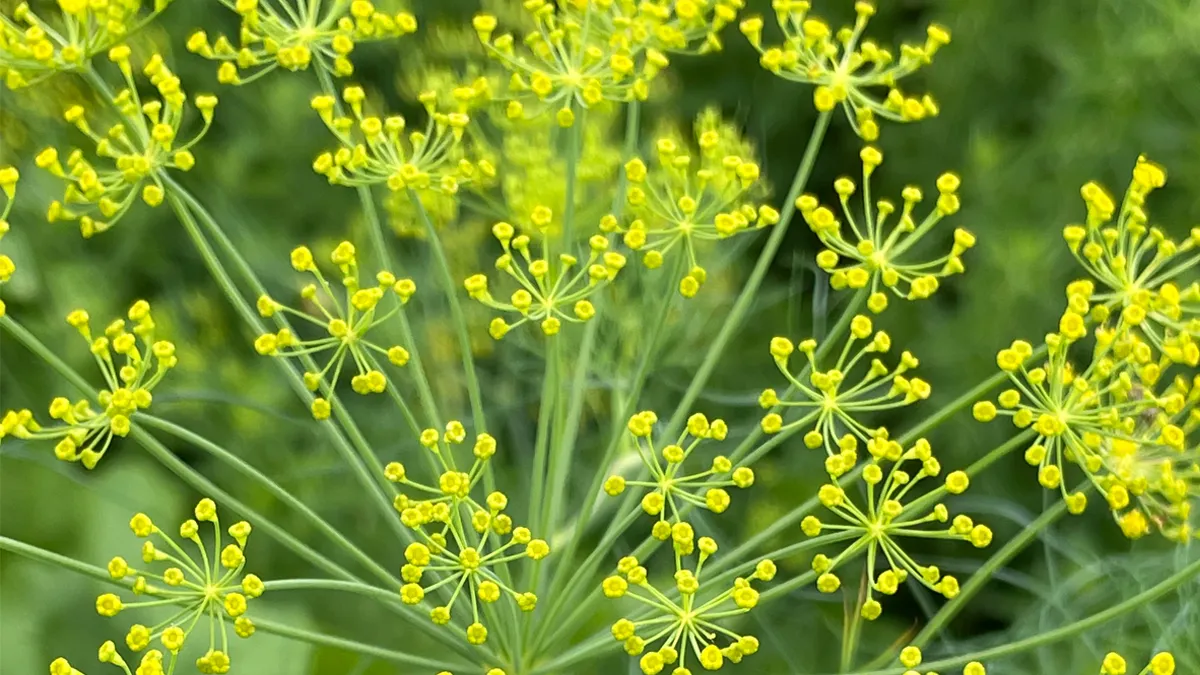This post may contain affiliate links. When you purchase through links on my site, I may earn a commission at no cost to you. See my Privacy Policy for details.
Growing your own herbs is one of the most rewarding parts of gardening. Herbs bring not only flavor to your meals but also a sense of accomplishment when plucked fresh from your garden. If you’re thinking about starting or expanding your kitchen herb garden, here are the top 10 herbs every home cook should consider.
1. Basil
Basil is the cornerstone of many kitchen gardens, thanks to its versatility and unmistakable aroma. Use it in everything from pesto and pasta sauces to soups and salads. It’s easy to grow in well-drained soil with plenty of sunlight. Just remember to pinch off the flowers to encourage more leafy growth. For more tips and tricks, check out my guide on growing basil.
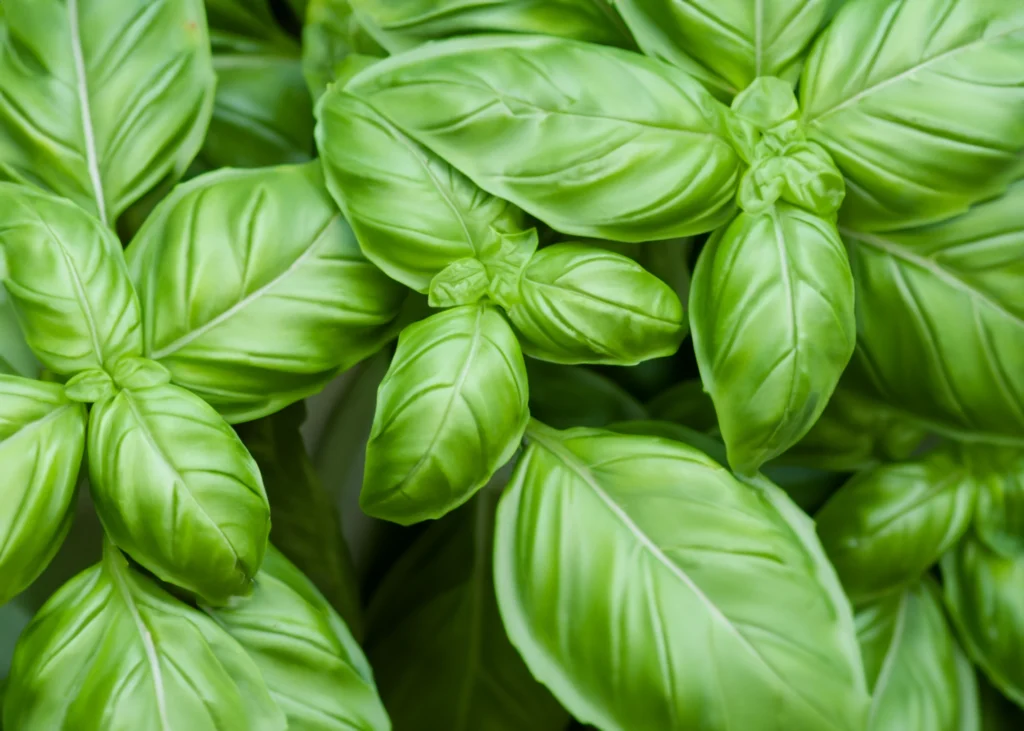
2. Mint
Mint is perfect for adding a refreshing kick to teas, cocktails, and desserts. It grows quickly and can easily take over, so it’s best to plant it in a pot to prevent its roots from spreading uncontrollably. Once established, mint requires very little care—just keep it moist and harvest regularly.
3. Thyme
Thyme is a low-maintenance herb that packs a lot of flavor into its tiny leaves, making it a favorite in stews, roasts, and marinades. It thrives in containers and doesn’t require much water, making it ideal for any kitchen garden. Curious about using containers? Check out our container garden guide to see how thyme fits into the mix.
4. Rosemary
Rosemary’s woody stems and needle-like leaves are packed with flavor. It’s a must-have for anyone who loves cooking hearty meats like lamb or chicken. It’s also drought-tolerant and can grow equally well in pots or directly in your garden soil. Plus, its fragrant aroma can make your outdoor space smell amazing.
5. Cilantro
Cilantro, also known for its seeds as coriander, is a double-duty herb. Its fresh leaves are perfect for salsa and curries, while the seeds can be dried and used as a spice. It prefers cooler weather and will bolt quickly in the heat, so plant it early spring or fall for the best results.
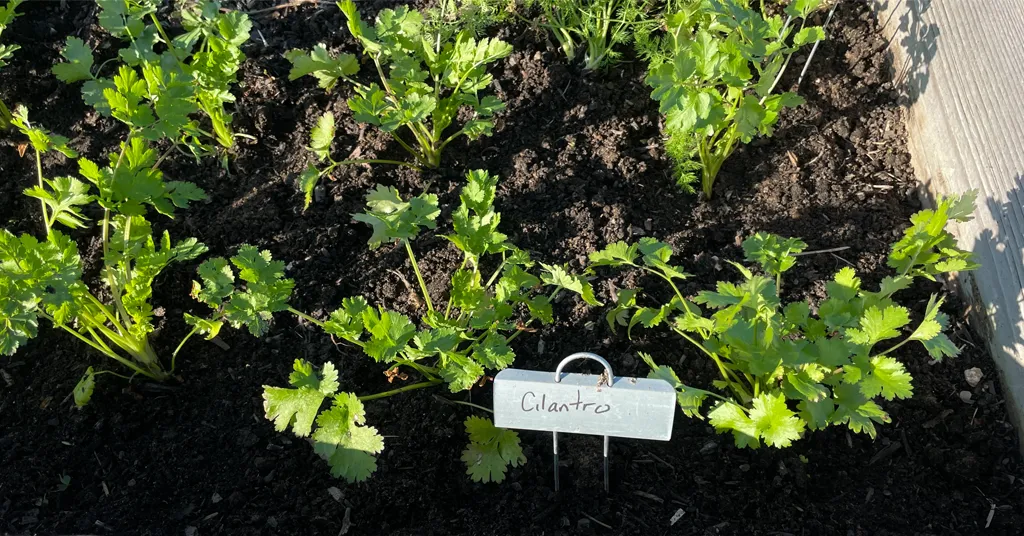
6. Parsley
Known more as a garnish, parsley is also packed with nutrients like Vitamin K and C. Flat-leaf parsley offers a bolder flavor ideal for cooking, while curly parsley makes for a beautiful presentation. Parsley grows excellently in containers, so it’s a great pick if you’re short on space.
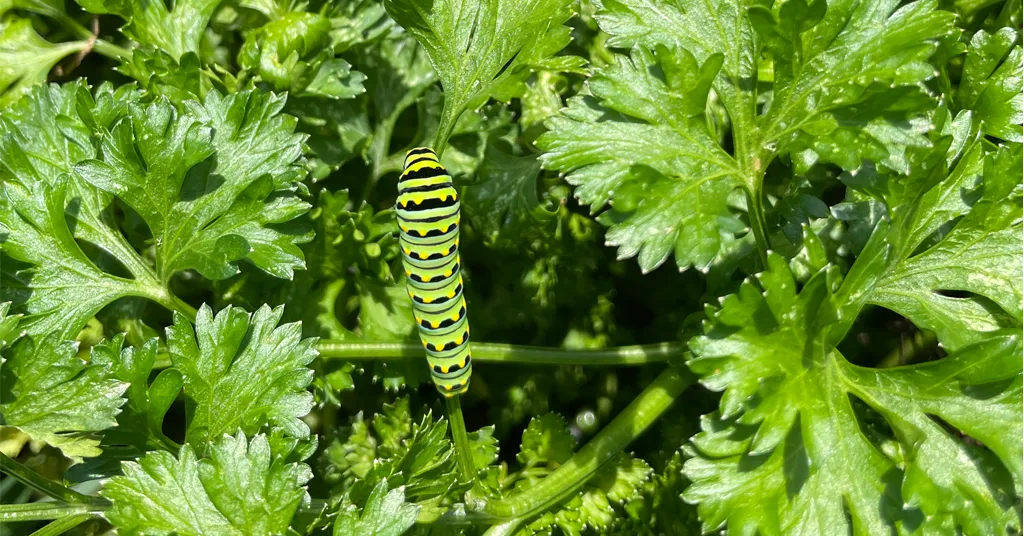
7. Dill
Dill is a favorite for pickling, but it’s just as delightful sprinkled over fresh fish or salads. As a bonus, dill can help repel pests like aphids, making it a great companion plant in your garden. It loves plenty of sunlight, so make sure to place it in a sunny spot. Plant enough to share with the swallowtail butterfly caterpillars, it is one of their host plants.
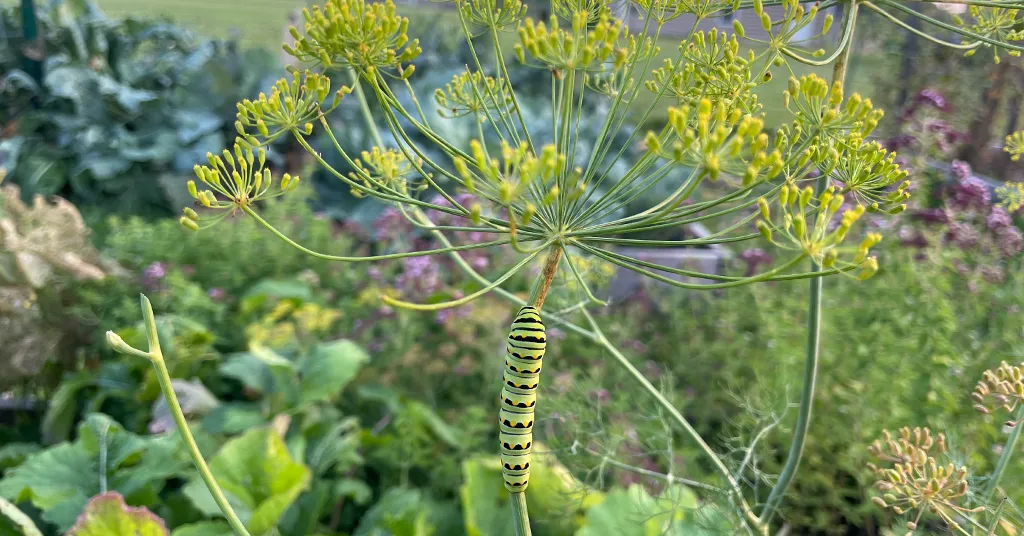
8. Sage
Sage is hardy and grows well in all seasons, lending its earthy flavor to stuffing, meats, and even teas. It’s low maintenance and requires minimal water, making it resilient in most conditions. Sage is also evergreen in warmer climates, meaning you can enjoy it year-round.
9. Oregano
With its intense flavor and aroma, oregano is a staple in Mediterranean cooking. It’s a perennial herb, meaning it will come back every year once established. Plus, it’s drought-tolerant, making it great even for gardens where water is limited.

10. Chives
Chives have a mild, onion-like flavor that’s perfect for sprinkling over eggs, potatoes, or soups. They’re also visually appealing, thanks to their purple flowers, and are super easy to harvest—just snip what you need! Keep them well-watered, and they’ll continue to thrive.
Each herb on this list brings its unique benefits to the table (and to your garden!). A combination of these choices can ensure you have year-round flavor at your fingertips.
Frequently Asked Questions About Kitchen Herb Gardens
When you’re starting out with your kitchen herb garden, questions are bound to pop up. If you’re not sure how to keep your herbs thriving or how to get started, don’t worry—you’re far from alone. Here are some of the most common questions people have about growing herbs in a kitchen garden and answers to help you along the way.
How Much Sunlight Do Herbs Need?
Most herbs love sunlight and thrive with 6-8 hours of direct light each day. Keep in mind, some herbs like mint and parsley are more forgiving with lower light levels compared to sun-lovers like basil and rosemary.
What’s the Best Way to Water My Herbs?
The key to watering herbs is balance. Overwatering can lead to root rot, while underwatering can dry your plants out. A general rule of thumb? Wait for the top inch of soil to feel dry before watering. Some herbs, like rosemary and thyme, prefer drier soil, while basil and cilantro like consistent moisture. If your herbs are in pots, make sure they have drainage holes to prevent water from pooling at the bottom.
How Do I Keep My Herbs From Bolting in the Kitchen Herb Garden?
Bolting happens when an herb flowers and goes to seed, which can cause leaves to lose their flavor. This happens most often in herbs like cilantro and basil during hotter weather. To prevent it, regularly pinch off flower buds as soon as you see them. Also, keep the plants in a cooler location during summer heatwaves or provide some shade during the hottest parts of the day. Regular harvesting also helps by focusing the plant’s energy on growing fresh leaves.
Can I Reuse Grocery Store Herb Plants?
Those potted herbs you pick up from the grocery store can sometimes be saved and replanted, but they’re not always the most robust. These plants are often grown under less-than-ideal conditions and might need some TLC to thrive long-term. If you decide to use them, transplant them into larger pots with good-quality potting soil and ensure proper drainage. With a little patience, they can adapt and start producing consistent growth.
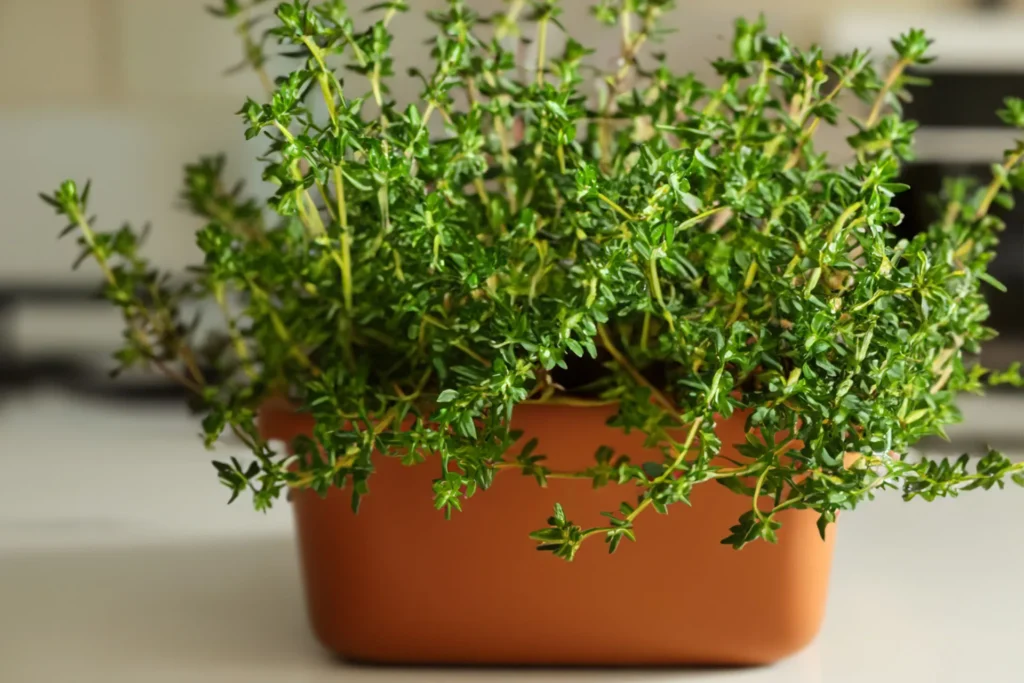
What’s the Best Soil for Growing Herbs?
Herbs prefer light, well-draining soil. For most kitchen herb gardens, a high-quality potting mix works beautifully. Avoid using heavy garden soil, as it can become compacted in pots and restrict root growth. Some herbs like rosemary and thyme enjoy a sandy mix, while others like basil thrive in rich, nutrient-dense soil. If you’re opting for container gardening, be sure to choose soil specifically formulated for pots.
How Often Should I Fertilize My Herbs?
Herbs don’t need a lot of extra feeding but benefit from a mild fertilizer every 4-6 weeks. A diluted, water-soluble fertilizer works great for providing nutrients without overwhelming the plants. However, keep in mind that too much fertilizer can dilute the oils in the leaves, which are responsible for the herbs’ flavor. Organically inclined? Compost or natural liquid fertilizers like fish emulsion are excellent choices.
Can I Grow Multiple Herbs Together in my Kitchen Herb Garden?
Yes, many herbs can share a pot or raised bed, but they need similar care requirements. For example, rosemary, thyme, and sage all prefer drier soil, so they make great companions. However, you wouldn’t want to pair them with heavy drinkers like basil or parsley. When grouping herbs, make sure they have plenty of space to grow and enough drainage to avoid waterlogging.

What’s the Easiest Herb to Grow for Beginners?
If you’re just getting started, try growing basil, chives, or mint. These herbs grow quickly, are forgiving of small mistakes, and can thrive in a variety of conditions. Mint is particularly hardy, but it’s best to grow it in its own container since it has a habit of spreading. Basil’s rapid growth makes it rewarding for first-time gardeners—just be sure to give it plenty of sunlight.
How Do I Harvest Herbs Without Harming the Plant?
Proper harvesting promotes healthy growth. For leafy herbs like basil and parsley, pinch or snip stems just above a leaf node to encourage the plant to produce more foliage. For woody herbs like rosemary or thyme, use sharp scissors to clip small amounts, leaving the main structure intact. Always avoid taking more than one-third of the plant at a time to prevent stress.
A kitchen herb garden is more than just a hobby—it’s a simple way to bring fresh flavors and greenery into your daily life. With just a bit of care, you’ll have access to the best herbs for kitchen gardens, ready to elevate any dish. It’s cost-effective, sustainable, and incredibly rewarding.
Why not get started today? Whether you create a windowsill herb garden or experiment with companion planting techniques, the possibilities are endless. Let your creativity guide you and turn the act of growing herbs into a personal delight.
What’s your favorite herb to grow? Share your thoughts or explore more resources on starting your own thriving herb garden!

